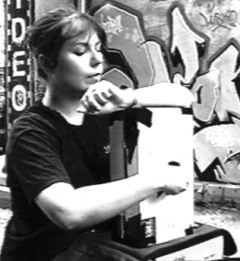
How pinhole cameras work
You can make a camera out of almost anything that can be opened and closed. As long as you can make it light tight you can make a camera out of it.

When you make your first camera from scratch if you make it like a well made show box you can't go too wrong. The picture above is a simplified diagram of how the parts go together.
The actual size of the camera is up to you. As long as you make the 'back' fit snugly onto the 'front' the camera will work.
The size of the pinhole is relative to the size of your camera. The rule of thumb says that if your camera has a focal length of 6" then your pinhole should be .5mm in diameter. This is a rough measure, but it gets you into the right area.
The optimum pinhole = √ (0.0016 x the pinhole to film distance)
When you make the pinhole use a 'drilling' motion to get the pin through the tin or brass sheet. This avoids making a big, messy, rough hole. Aluminium baking sheets, soft drink cans or brass can be used to make your pinhole and lens section. A hole directly through the box will not be accurate enough.
You will need something to cover your 'pinhole' (i.e. black tape) until you are ready to take your picture and after you have finished your exposure.
This will leave you with a negative image where movement and time can be captured in one image.
To load and develop the paper you will need access to a darkroom.
For examples of the many possibilities that can be produced from all sorts of pinhole cameras and more detailed instructions have a look at The Penultimate Pinhole Page
Exposure Guide
|
 |